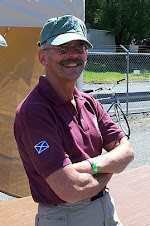
I first moved to Lake Oswego 36 years ago and in that time I’ve seen this city blossom into the beautiful city that it is today. I love our city and I believe it to be the best city in Oregon.
We have strong community involvement and support for our schools, library and neighborhoods. That is something we must always maintain.
I have served on several boards and committees over the years and am still involved in other community activity. My goal is to keep Lake Oswego a great city in which to live and raise our families.
I am running for city council because I believe every elected official has a fiduciary duty to the taxpayers to ensure their tax dollars are spent prudently and thoughtfully. I believe in fiscal responsibility, an open and transparent city council and a realistic approach to the prioritization of spending.
Two years ago, before the city council, the mayor presented me with a Distinguished Service Award in appreciation of my service on the Natural Resources Advisory Board. As she presented this award she commented to the audience that the one thing she had heard about me was “I spoke my mind.” I had never thought about that before but I realized I do tend to speak my mind as well as answer questions directly without doing a verbal tapdance.
Yogi Berra once said that when you come to the fork in the road take it. We will soon be receiving our ballots and we are going to have to make the choice: Shall we elect to continue with the current city council’s direction or shall we elect to swing the pendulum back toward the center?
I personally feel in these economic times we must err on the side of fiscal restraint as to how our resources are expended and which projects, both current and future, are truly warranted. If the roof of your home is leaking is it really prudent to be focused on putting a swimming pool in the backyard? It is going to be expensive enough just to repair the infrastructure in Lake Oswego without saddling the taxpayer with unnecessary taxes and unnecessary projects of questionable utility.
The economic news isn’t the best either nationally or worldwide. Our economy may be facing the worst downturn since the Great Depression. We see the evidence every day in the stock market, housing values, our retirement accounts, bank failures, the list goes on. It is time for serious reflection as to whom we choose to manage our city’s resources and who you trust to do it. We must cast our votes for what is best for our personal well being and that of Lake Oswego, not on the desires of the individuals, organizations and PACs afraid to deviate from the current party line.
Do we want to follow the endorsements of the folks who created the dissension and angst in this city in the first place or do we take the fork in the road and begin rebuilding the trust and respect that was squandered?
Personally, I’m voting to rebuild trust and respect and I hope you will also. I believe I can meet the challenges ahead and that I am the right person at the right time for Lake Oswego City Council. I appreciate your vote.
 nd brass triggerguard, butt plate and ramrod ferrules. The walnut was 2"x16''x33" and yielded blanks for the rifle and a pistol. I selected the best part of the wood with the most character for the rifle stock blank. To make the stock blank I printed a photo of a NE Rifle and using an overhead projector I traced the photo onto white butcher paper which I then transferred to Plexiglas to make the pattern. I then cut the Plexiglas pattern out using a band saw, traced out the stock using the Plexiglas pattern , and finally cut out the stock blank using the same band saw. A lot of work.
nd brass triggerguard, butt plate and ramrod ferrules. The walnut was 2"x16''x33" and yielded blanks for the rifle and a pistol. I selected the best part of the wood with the most character for the rifle stock blank. To make the stock blank I printed a photo of a NE Rifle and using an overhead projector I traced the photo onto white butcher paper which I then transferred to Plexiglas to make the pattern. I then cut the Plexiglas pattern out using a band saw, traced out the stock using the Plexiglas pattern , and finally cut out the stock blank using the same band saw. A lot of work.







 An image showing the finished sliding wooden patchbox with its brass plate inlet into the butt and brass butt plate.
An image showing the finished sliding wooden patchbox with its brass plate inlet into the butt and brass butt plate.









